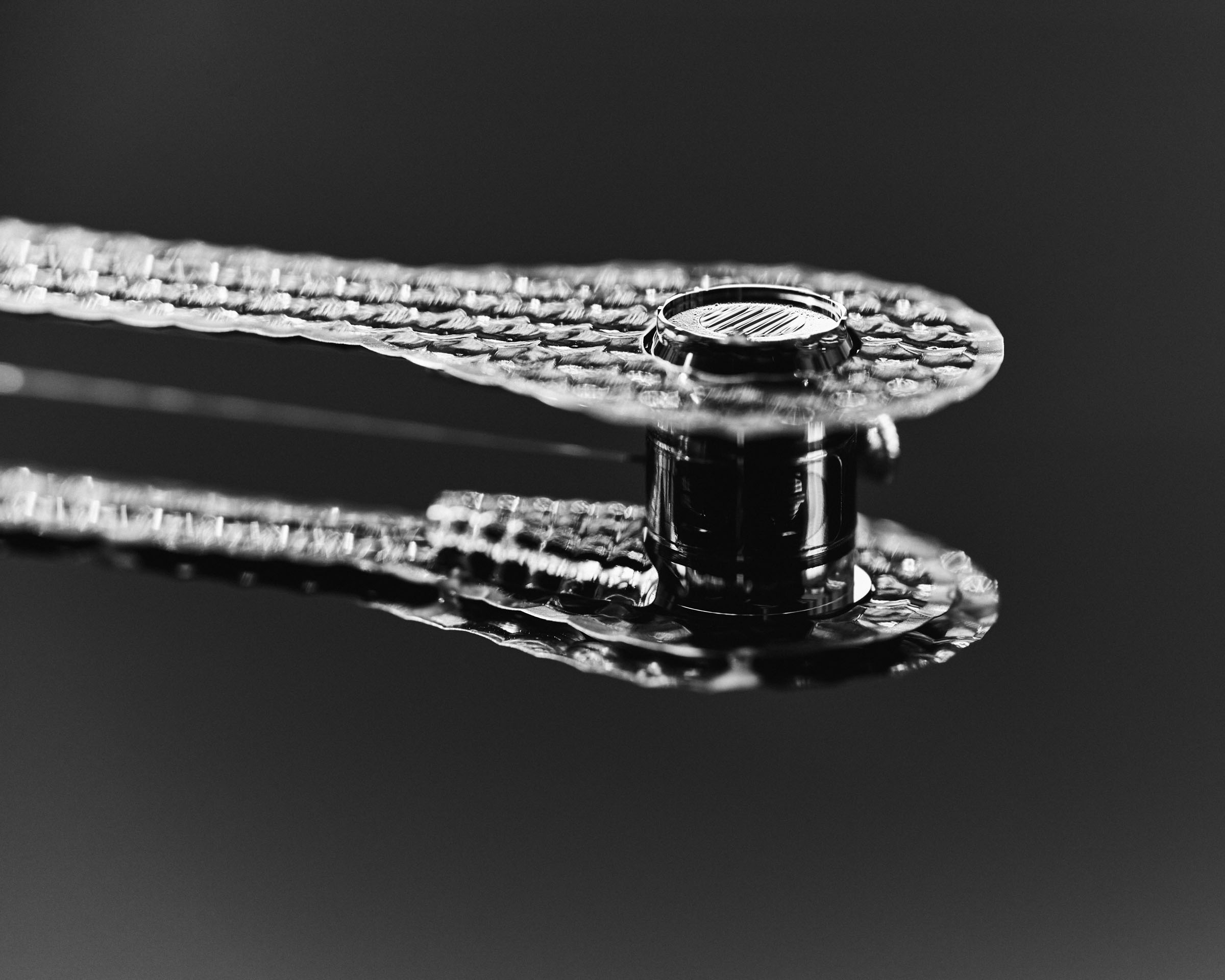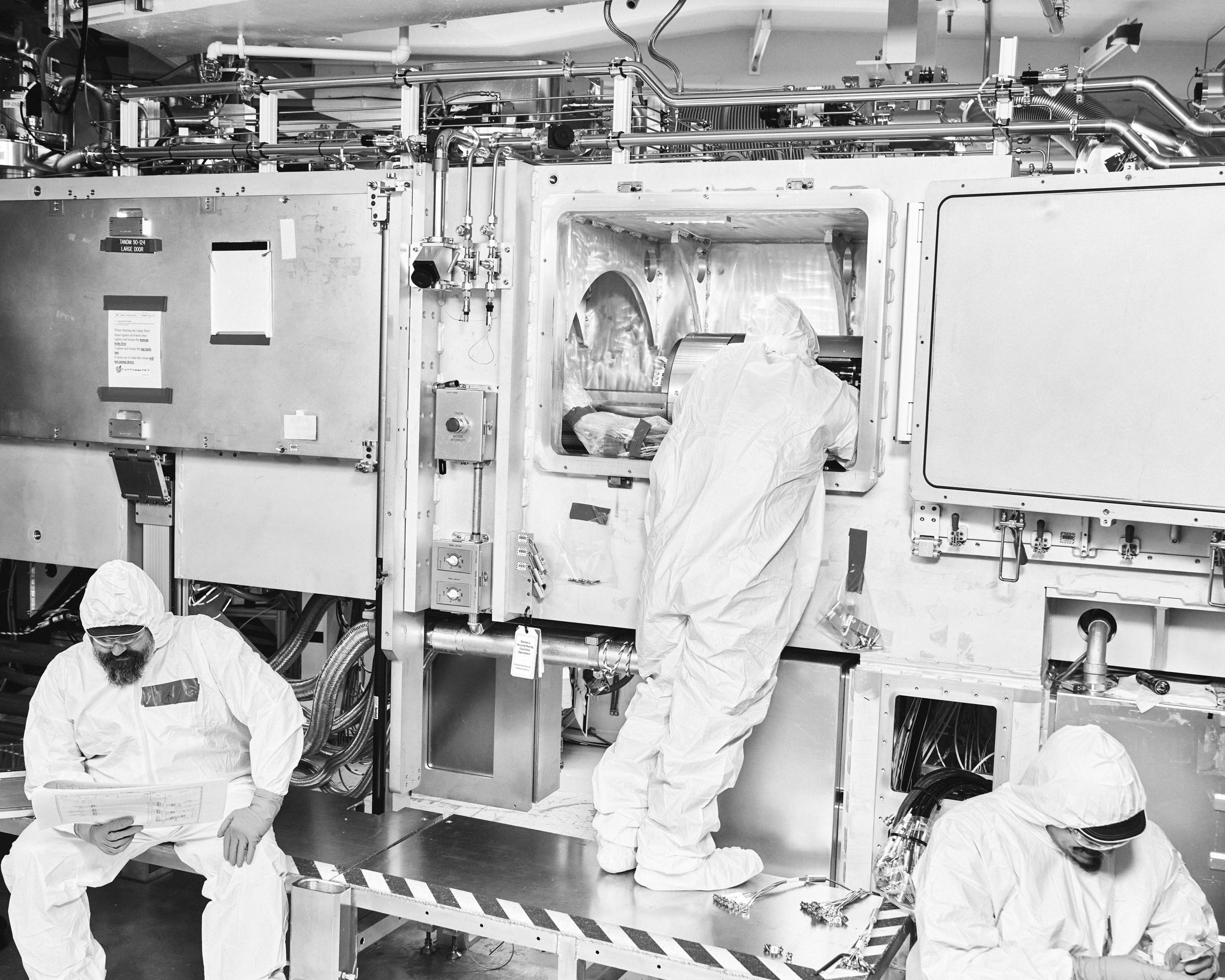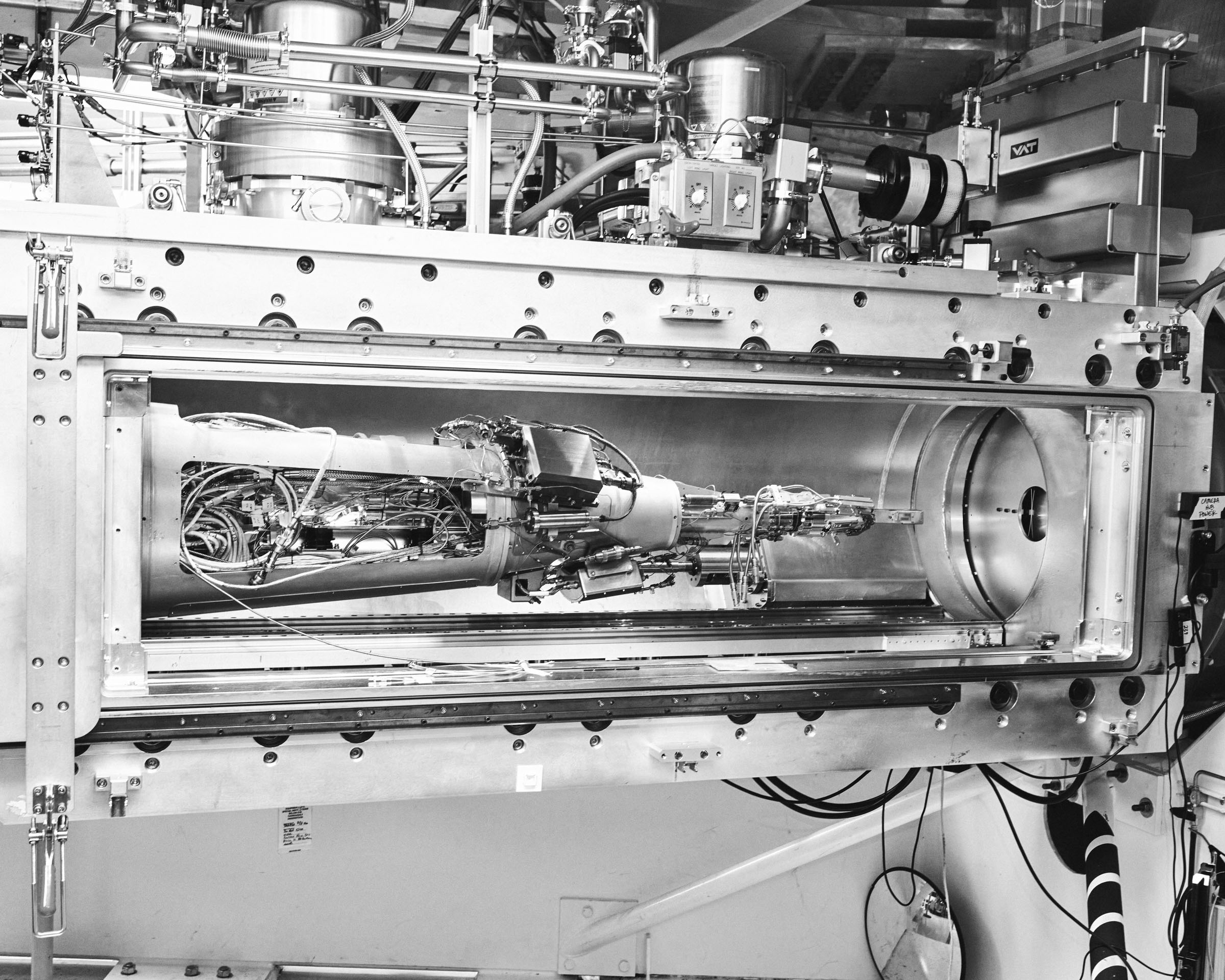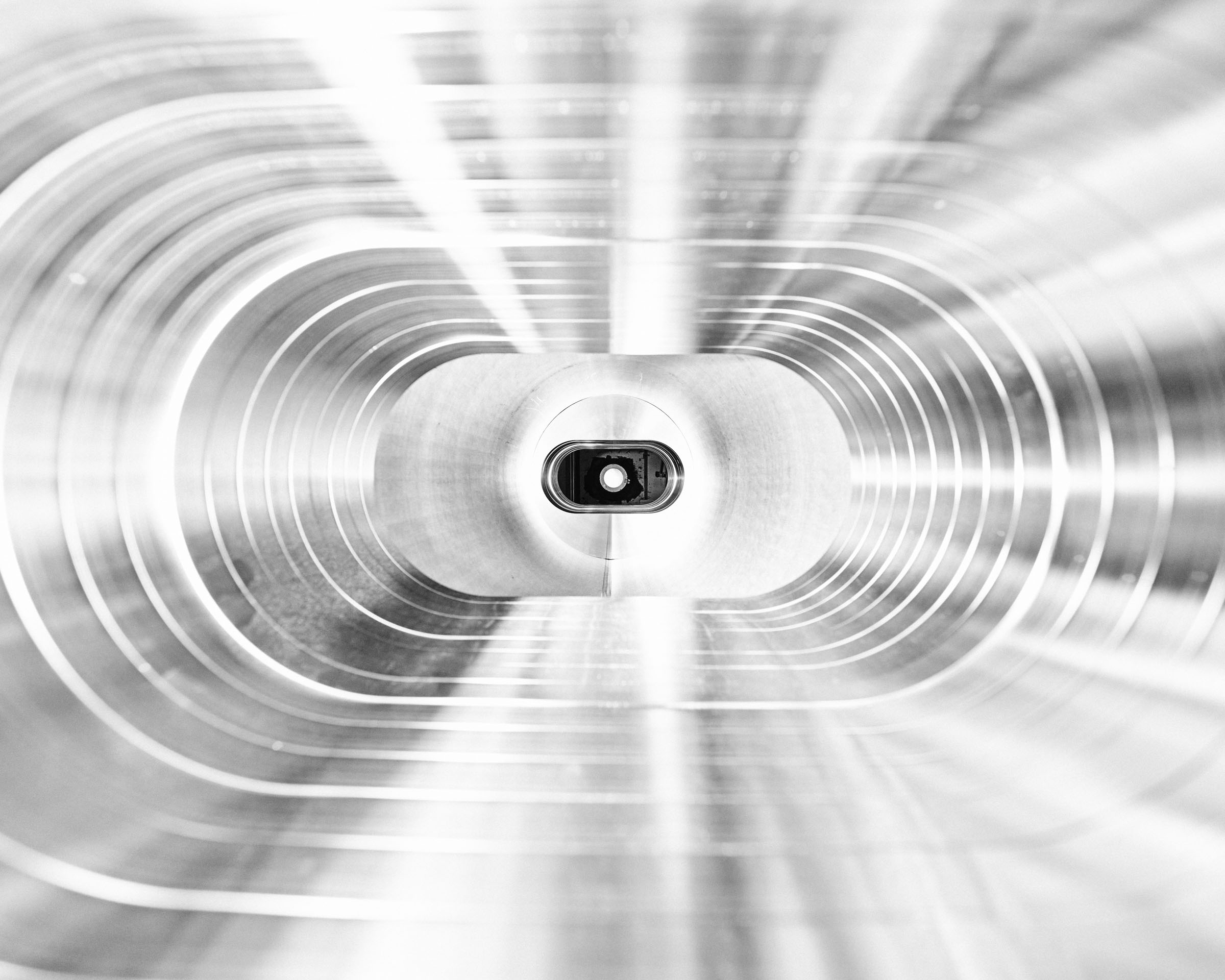Shortly after 1 a.m. on the morning of Dec. 5, 2022, Dave Schlossberg, an experimental physicist at National Ignition Facility (NIF), was woken by a phone call. A fusion experiment using NIF’s massive lasers was scheduled to go off that night. Going to bed a few hours earlier, he had told Alex Zylstra, one of the physicists on his team, to call him “if anything interesting happens.” Now Zylstra was seeing data unlike anything the facility had registered before. They seemed to show that the scientists had achieved a monumental step in a decades-long quest to replicate the energy source that powers the sun. Schlossberg picked up. “I think something interesting happened,” Zylstra said.
Researchers at this Livermore, Calif., facility had spent more than 13 years trying and failing to attain fusion ignition, meaning that the reaction outputs more energy than scientists put into it. Some expert observers thought it would never work. Yet, there, in the facility’s experimental database was the evidence. At 1:03:50 a.m., NIF’s 192 powerful laser beams had plowed 2.05 megajoules (MJ) of energy onto a small gold cylinder, which converted that ultraviolet radiation into powerful X-rays that enveloped a peppercorn-sized diamond capsule containing two hydrogen isotopes, deuterium and tritium. For the briefest of instants, the interior of that capsule collapsed to 100 times the density of lead, forcing the hydrogen atoms to fuse into helium and converting a tiny amount of mass into enormous amounts of energy. About 70 trillionths of a second later, the capsule exploded, releasing 3.15 MJ of energy, equivalent to about three sticks of dynamite.
The result was a scientific wonder, a feat that researchers had hoped to create in a laboratory since scientists first started bandying about the idea of using controlled nuclear fusion to produce electricity in the 1950s. That idea—to replicate the reaction that fuels the stars by smashing hydrogen atoms together to form helium—could theoretically provide almost unlimited, emissions-free electricity with none of the safety risks or waste disposal problems of nuclear fission reactors. In practice, though, proving out such a process in the laboratory has eluded scientists and engineers for decades.
Read more: A New Generation of Nuclear Reactors Could Hold the Key to a Green Future
Since it opened in 2009, NIF has pursued one approach to the challenge: forcing those hydrogen atoms together by hitting them with powerful laser beams with the goal of reaching ignition, as implied in the facility’s name, a crucial step if the technology is ever to find use as a source of clean energy. Now, a decade and a half later, hopes have been renewed that the dream might one day be realized.
More From TIME
Not that the researchers are close to using any energy they make at their stadium-sized facility to power much of anything. NIF is not a power plant, and the electrical power that its massive lasers draw from the grid (hundreds of times more than they output in the target chamber) far exceeds anything it could ever hope to produce. Still, it had attained an important breakthrough that December day. As the news trickled out, fusion fever spread around the world; U.S. Energy Secretary Jennifer Granholm described it as the most important scientific milestone of the 21st century. Fusion energy entrepreneurs basked in the newfound hopes for their field.

But even in the midst of the celebration, pressure mounted at NIF to swiftly replicate those results to prove that the groundbreaking experiment was no accident, and then to push for yet higher fusion energy yields. TIME has followed NIF scientists through that post-ignition journey over the past year—one of difficulty and pride, despondence and euphoria, a testament to the ingenuity and determination of the researchers, and the unique role of government-funded enterprises in pushing difficult scientific endeavors forward. It is also a reminder of the enormous, sobering challenge that remains: converting the recent breakthrough into a clean energy source that could help reverse humanity’s climate predicament while there’s still time.
Annie Kritcher often wakes up in the middle of the night with new ideas to plug into her simulations. “My husband would characterize it as obsessive,” Kritcher says. “Sometimes I'll be playing with my kids, and then I realize I'm not actually playing with them. They’re like ‘Mom, you're just standing there.’ I was having a whole conversation in my head about simulations.”
As a design physicist, her job is to use computer models to predict what adjustments in laser pulse wavelength and power, tweaks to the fuel capsule and surrounding gold hohlraum, and innumerable other potential changes might squeeze hydrogen atoms together in just the right way to yield a fusion reaction.
Kritcher had designed an August 2021 NIF experiment that produced a record 1.3MJ of fusion energy using 1.9 MJ of inputted laser energy—a success that came thanks to tweaks including shifting more of the input energy to the later part of the laser shot. The result put NIF’s scientists at the threshold of ignition. Afterwards, the facility started preparing for experiments that would push the aging lasers to even higher energy levels. The laser had been designed to output 1.8MJ, and technicians had already been able to get it to 1.9MJ. Now, by adding a new optic that better protected laser components from flying debris near the target chamber, they believed they could ratchet those beams up to 2.05MJ. That might sound marginal. But as the energy input in a fusion experiment increases, the energy output tends to rise exponentially. An extra 0.15MJ of laser energy, the researchers thought, might just be enough to break the ignition barrier.
Kritcher conceived a plan to put that extra laser energy to use, principally by increasing the thickness of the target capsule. An experiment in September failed—the fuel had imploded in the shape of a pancake, with only 1.19 MJ of energy yield. Such “breakfast food” errors, as Kritcher calls them, are a fact of life at NIF: ideally, the lasers will compress the fusion fuel in the shape of a uniform sphere, which applies maximum pressure to force the hydrogen atoms together, but sometimes you end up with implosions in the shapes of pancakes, sausages, and bear claws, which result in less energy. The team made some tweaks to the lasers, including adjusting their wavelengths. Then, on that early morning of Dec. 5, 2022, they gave it another go—and it worked.


Kritcher says she cried when she got the news. “I was in a frozen ecstatic state. I had a perma-smile for a week.”
It had been a long, hard road to achieve such a result; in 2013 it had been an impressive feat to get 14 kilojoules out of a reaction, less than 0.5% of the energy released last December. “It was all a bit surreal,” says Art Pak, one of the scientists on the project, “realizing that something you've been working on for a decade, something that people have been working on for 60 years, is here.”
But science is not about pulling something off once. To show that you really understand a phenomenon, you have to be able to reproduce it again and again. But subsequent attempts to achieve ignition kept failing. One difficulty NIF faced was in filling the experiment’s tiny diamond target capsules with deuterium and tritium atoms, which required using a tube less than one hundredth the width of a human hair. If the hydrogen isotopes leak en route to the test chamber, the capsule becomes useless. And many of the capsules were failing. “I was a complete wreck every time I lost a target,” says Kritcher. “You follow these targets like they're your children.”
Pak tried not to let the disappointments get to him—he had become well acquainted with failures in the program’s difficult early years: “Just because you work hard, and you do everything you think is right, sometimes things don't work out,” he says. “Don’t tie your self-worth and personal happiness to experimental physics.”
Nevertheless, internal frustrations and outside pressure grew as winter turned to spring. NIF’s supporters in congress had advocated for the facility despite years of slow progress; now they wanted the researchers to show they could repeat their December 2022 success. Critics of the program were becoming more vocal. “This program has a long history of naysayers and adversaries,” says Kim Budil, director of the Lawrence Livermore National Laboratory, which oversees NIF. “They thought it was a stupid approach, and we were ridiculously arrogant.”

The NIF team also felt a sense of obligation to the public, says Budil. The government had given it billions of dollars of funding, and the lab leadership felt American taxpayers deserved a followup success, and fast. In March, Budil called together the fusion program’s leadership. “I introduced a new term called the ‘ignition fiscal year,’” Budil says. “We cannot get to the end of the ignition fiscal year”—that is, by December 2023—"without repeating this experiment."
In June, the facility’s scientists conducted an experiment that was just shy of ignition: Then, on July 30, the researchers finally managed to outperform their Dec. 5 result, producing 3.9 MJ of energy, a new record, with 2.05 MJ of laser input. A collective exhale followed. “This result wasn't a fluke,” Budil says. “That was a great thing to be able to say, ‘We got that. What’s next?’” In October, the researchers achieved an arguably even more significant result. Using a new experimental design, the facility’s scientists managed to pull off a 2.4 MJ yield—with only 1.9 MJ of laser energy. “We're starting to understand a fuller picture of how these systems work,” Pak told TIME after the results came in. “In one instance, you start with a bigger hammer and you whack the thing harder. In the other instance you aim very carefully and you do it just right.”


For years after NIF opened in 2009, a banner hung from the enormous building did not mince words about its purpose: “Bringing star power to Earth.” Most of the reporting and commentary on the facility’s successes and failures has, in turn, focused on the goal that motto implies: developing new, world-changing energy technology.
The reality, however, is complicated. NIF, which cost $3.5 billion to build, gets its approximately $380 million annual operating budget from the National Nuclear Security Administration, an agency of the U.S. Department of Energy tasked with maintaining the nation’s nuclear stockpile. The primary impetus for NIF’s construction was the promise that fusion reactions ignited by the facility’s powerful lasers would yield data that would help the U.S. maintain its nuclear arsenal without underground nuclear testing. NIF leadership stresses that advancement in fusion energy and fundamental physics are important co-benefits of that work—and it is true that in some ways, those three aims are inseparable. Foundationally, though, the drive to produce broad new scientific research and advance fusion energy comes second. “The purpose for NIF is our nuclear deterrent,” says Mark Herrmann, program director for weapon physics and design at NIF. “There’s no ifs, ands, or buts about that.”

Still, NIF scientists say that their work could be a scientific boon across all branches of fusion energy development. “We're exploring science and physics reactions that have never been made in a controlled laboratory setting,” says Schlossberg. “No one has ever done this before.” Indeed, the ignition success has spurred public sector investment and excitement in the buzzy world of private fusion, though high interest rates have taken a bite out of new venture capital funding.
Meanwhile, the past year’s record temperatures worldwide—a sign of accelerating global warming—has made the idea that fusion energy can be a hail mary pass that solves the climate crisis all the more potent. Entrepreneurs have embraced that framing, and some have promised operational commercial fusion power plants within the next five years. Academic researchers tend to give more cautious timetables, often along the lines of two decades. The old joke is something of a sore point: fusion energy is the energy source of the future, and always will be.
NIF’s ignition success, and the progress in the months that followed, makes a case that the longstanding hopes for fusion energy might yet be borne out, and perhaps even come within the short span of time humanity has left to cut emissions to zero and stave off the worst effects of climate change. But as the history of NIF has shown, scientific progress is a fickle thing. The subatomic world follows no schedules. With some regularity, researchers at NIF are producing minuscule, nanosecond stars. But there is so far yet to go.
A lot of people at NIF talk about the way that expectations almost immediately ratchet up in the wake of big successes, both for scientists themselves, and throughout higher layers of administrative and political oversight. “We are happy when things go right,” Kritcher says. “But then you almost immediately get into this state of [asking], ‘How do I make it better?’”


John Nuckolls, the former director at Lawrence Livermore National Laboratory, which oversees NIF, is a sort of government lab legend. He came up with the original idea of using lasers, then a new invention, to drive fusion reactions back in the 1960s. At 92 years old, he still occasionally comes into work at the lab. After the successful December 2022 shot, Budil congratulated Nuckolls; his response was to ask her when the researchers were going to outperform that and reach 5 MJ of energy yield.
“Stop having press conferences,” Budil recalls him saying. “Let’s go to work.’”
For about a year, NIF had been preparing for a new experiment that would push the facility even further, with technicians upgrading the 14-year-old lasers to bump their energy up to 2.2 MJ. The lab will only be able to manage a few of these super-powered shots a year, since they can damage the facility’s components faster than they can be replaced. “2.05 [MJ] was turning it to 11,” says Town. “2.2 [MJ] is turning it to 12.”
Running the numbers before the first 2.2 MJ fusion test, NIF scientists projected the energy yield could hit around 10 MJ, three times more than the previous year’s shot had produced—assuming everything went according to plan, which rarely happens the first time around.
Speaking ahead of that test, Pak referred back to the early days of NIF, when the facility’s predictive models and experimental reality were miles apart. They’ve come a long way since then, but not so far as to be able to perfectly predict all the issues that may arise in the superheated, nanosecond world of a fusion ignition. “With the history I’ve had, I think it’s better not to get your hopes up,” Pak says. “Low expectations and you’ll never be disappointed.”

On Oct. 30, the researchers fired up the laser to blast a target capsule with 2.2 MJ of ultraviolet light. The experiment achieved ignition, an explosion that released 3.4 MJ of energy, the second-highest yield ever recorded at the facility.
From one vantage point, it was a big success. From another perspective, it was a failure: The followup data showed a complex asymmetry in the fuel implosion, part sausage, part pancake. Budil had been hoping to break 5 MJ on that first 2.2 MJ shot. The next attempt is tentatively scheduled for February. “My expectations are going up,” she says.
The problems that sank the first attempt should be fixable, though researchers caution that resolving that complicated asymmetry could be tricky. The science of fusion is moving fast, perhaps faster than it ever has before. But that doesn’t mean that progress comes easily.
“Is it doable?” Town says of fixing the issues in the upcoming second 2.2 MJ experiment. “Well, we’ll give it a go.”
Correction, Jan 11
The original version of this article misstated the technical improvement that increased NIF's laser power. The facility added a new protective optic, not more amplifying glass.
The original version of this article also misstated Kim Budil's role. She is the director of Lawrence Livermore National Laboratory, not the director of NIF.
More Must-Reads from TIME
- Cybersecurity Experts Are Sounding the Alarm on DOGE
- Meet the 2025 Women of the Year
- The Harsh Truth About Disability Inclusion
- Why Do More Young Adults Have Cancer?
- Colman Domingo Leads With Radical Love
- How to Get Better at Doing Things Alone
- Michelle Zauner Stares Down the Darkness
Write to Alejandro de la Garza at alejandro.delagarza@time.com
